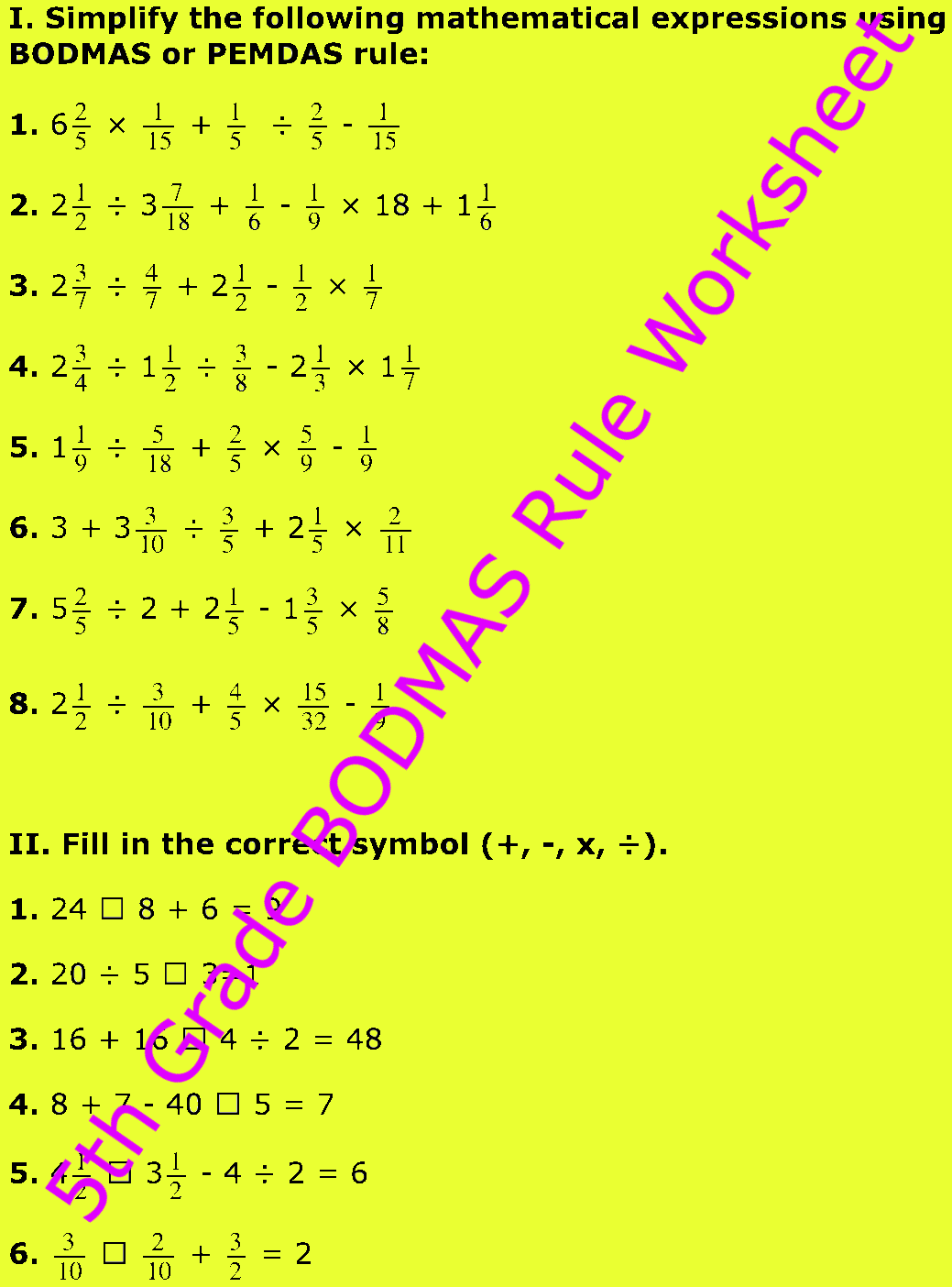Four Numbers in Proportion
We will learn four numbers in proportion.
In general, a, b, c, d are said to be in proportion if a : b = c : d which is written as a : b :: c : d and read as a is to b as c is to d.
Here, a, b, c, d are respectively called the first, second, third and fourth term.
The first term a and the fourth term d are called the extreme terms or extremes.
The second term b and the third term c are called the middle terms or means.
If a, b, c, d are in proportions, then product of extremes = product of means
⟹ a × d = b × c
For example, in proportion 2 : 3 :: 24 : 36
Product of extremes = 2 × 36 = 72
Product of means = 3 × 24 = 72
Hence, product of extremes = product of means.
If the two given ratios are not equal, then they are not in proportions and the product of their extremes is not equal to the product of their means.
Solved Examples on Four Numbers in Proportion:
1. Are 50, 75, 30, 45 in proportion?
Solution:
50 : 75 = 5075 = 50÷2575÷25 = 23 = 2 : 3
30 : 45 = 3045 = 30÷1545÷15 = 23 = 2 : 3
50 : 75 = 30 : 45
Hence, 50, 75, 30, 45 are in proportion.
Alternative Method:
Product of extremes = 50 × 45 = 2250
Product of means = 75 × 30 = 2250
Product of extremes = Product of means
Hence, 50, 75, 30, 45 are in proportion.
2. Are the ratios 10 minutes : 1 hour and 6 hours: 36 hours in proportion?
Solution:
10 minutes : 1 hour = 10 minutes : 60 minutes
= 10 : 60
= 1060
= 10÷1060÷10
= 16
= 1 : 6
and 6 hours : 36 hours = 6 : 36
= 636
= 6÷636÷6
= 16
= 1 : 6
Therefore, 10 minutes : 1 hour = 6 hours : 36 hours
Hence, the ratios 10 minutes : 1 hour and 6 hours : 36 hours are in proportion.
2. Christopher drives his car at a constant speed of 12 km per 10 minutes. How long will he take to cover 48 km?
Solution:
Let Christopher take x minutes to cover 48 km.
|
Speed (in km) |
Time (in minutes) | |
|
12 |
10 | |
|
48 |
x |
Now, 12 : 10 :: 48 : x
⟹ 12x = 10 × 48
⟹ x = 10×4812
⟹ x = 48012
⟹ x = 40
Therefore, x = 40 minutes.
3. Are the ratios 45 km: 60 km and 12 hours: 15 hours form a proportion?
Solution:
45 km : 60 km = 45 km60 km = 4560 = 45÷1560÷15 = 3 : 4
and 12 hours : 15 hours = 12 hours15 hours = 1215 = 12÷315÷3 = 4 : 5
Since 3 : 4 ≠ 4 : 5, therefore the given ratios do not form a proportion.
From Four Numbers in Proportion to HOME PAGE
Didn't find what you were looking for? Or want to know more information about Math Only Math. Use this Google Search to find what you need.
Recent Articles
-
Counting Numbers from 1 to 50 | Match the Number | Missing Numbers
Apr 04, 25 03:46 PM
In counting numbers from 1 to 50, recognize the numbers, count and then join the numbers in the correct number order. Here we mainly need eye-hand coordination to draw the picture and maintain the num -
Counting Eleven to Twenty with Numbers and Words |Numbers from 11 - 20
Apr 04, 25 03:21 PM
Counting eleven to twenty with numbers and words are explained below. One ten and one more is eleven. Eleven comes after ten. One ten and two more is twelve. Twelve comes after eleven. -
5th Grade BODMAS Rule Worksheet | PEMDAS | Order of operations|Answers
Apr 03, 25 03:11 PM
In 5th Grade BODMAS Rule Worksheet you will get different types of problems on mathematical expressions involving different operations, mathematical expression with 'brackets' and 'of' and simplifying… -
Worksheet on Simplification | Simplify Expressions | BODMAS Questions
Apr 03, 25 02:58 PM
In worksheet on simplification, the questions are based in order to simplify expressions involving more than one bracket by using the steps of removal of brackets. This exercise sheet -
Divisible by 2 Video |Test of Divisibility by 2 Trick| Rules| Examples
Apr 03, 25 10:25 AM
A number is divisible by 2 if the digit at unit place is either 0 or multiple of 2. So a number is divisible by 2 if digit at its units place is 0, 2, 4, 6 or 8.





New! Comments
Have your say about what you just read! Leave me a comment in the box below. Ask a Question or Answer a Question.